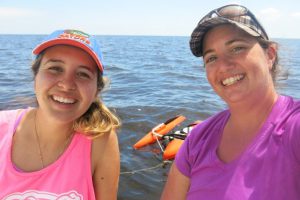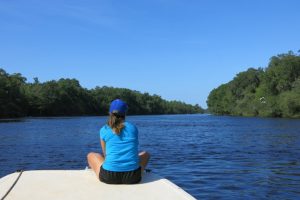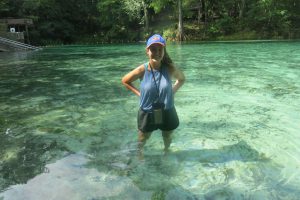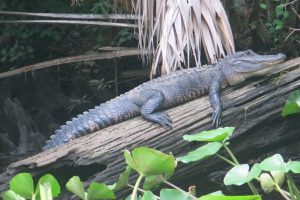 NCBS Intern Report By: Jordana Cutajar, Intern with UF IFAS Nature Coast Biological Station and Darlene Velez of the Suwannee River Water Management District
NCBS Intern Report By: Jordana Cutajar, Intern with UF IFAS Nature Coast Biological Station and Darlene Velez of the Suwannee River Water Management District
What’s after graduation? An internship!
I had always been passionate about environmental science, but was uncertain about what I wanted to do. As  a graduating senior I felt pressured to have it all figured out, but I wasn’t confident about my next move. So after graduating I started interning at the Suwannee River Water Management District, working alongside Environmental Scientist Darlene Velez.
a graduating senior I felt pressured to have it all figured out, but I wasn’t confident about my next move. So after graduating I started interning at the Suwannee River Water Management District, working alongside Environmental Scientist Darlene Velez.
My internship involved the collection and review of water quality in the Suwannee River Basin and its surrounding springs. I helped conduct rapid shallow water quality assessments using the SUNA and the EXO which took readings about every thirty seconds. I learned how to calibrate and deploy the SUNA V2 (Submersible Ultraviolet Nitrate Analyzer) which uses ultraviolet light technology to measure nitrate-nitrogen concentrations, and the Exo2 which uses smart sensor technology to measure up to six different water quality parameters at the same time like; temperature, conductivity, dissolved organic matter and turbidity. Both instruments were placed in PVC pipes for protection and were attached to a float that we tied to our boat to collect data on the river. We brought this equipment through the Suwannee and its springs to paint a picture of the water quality throughout the river and see how the springs, which we predicted would have higher nitrogen levels, were influencing the river.
 Learning (and loving) what it’s all about
Learning (and loving) what it’s all about
Before this internship I hardly had any field work experience, but I quickly grew accustomed to working long days on the Suwannee and came to love the river. But I also learned that not everything goes according to plan; tires blow, rain storms hit, and sometimes equipment fails you, but that’s all a part of field work. On our hardest day we blew three tires! I had never changed a tire before, but by the end of the week I had changed five tires! In spite of it all we still finished our project in time!
After all the data was collected I learned how to analyze and visually display data using ArcGIS. The program, while  complex, was very interesting to learn. Once the GPS coordinates and time stamps for each data point were synced I could look at the SUNA and Exo data. For each data point on the river I was able to see the nitrate levels, temperature, specific conductivity, and more. There was so much data collected and a lot of information from this pilot study so the useful possibilities are endless. Hopefully, the data will be used to continue protecting and restoring the Suwannee River and its springs.
complex, was very interesting to learn. Once the GPS coordinates and time stamps for each data point were synced I could look at the SUNA and Exo data. For each data point on the river I was able to see the nitrate levels, temperature, specific conductivity, and more. There was so much data collected and a lot of information from this pilot study so the useful possibilities are endless. Hopefully, the data will be used to continue protecting and restoring the Suwannee River and its springs.
 I loved every day of my internship, even the more challenging days. I was always learning something new, whether it was a new life lesson, or a water factoid. This internship influenced my direction; now I want to continue working and studying water quality and water related issues. It also made me realize I enjoy field work! I am forever grateful for this experience and am excited for whatever new opportunities lie ahead. Thank you to everyone who helped me along this incredible journey!
I loved every day of my internship, even the more challenging days. I was always learning something new, whether it was a new life lesson, or a water factoid. This internship influenced my direction; now I want to continue working and studying water quality and water related issues. It also made me realize I enjoy field work! I am forever grateful for this experience and am excited for whatever new opportunities lie ahead. Thank you to everyone who helped me along this incredible journey!
 0
0
 Learning (and loving) what it’s all about
Learning (and loving) what it’s all about